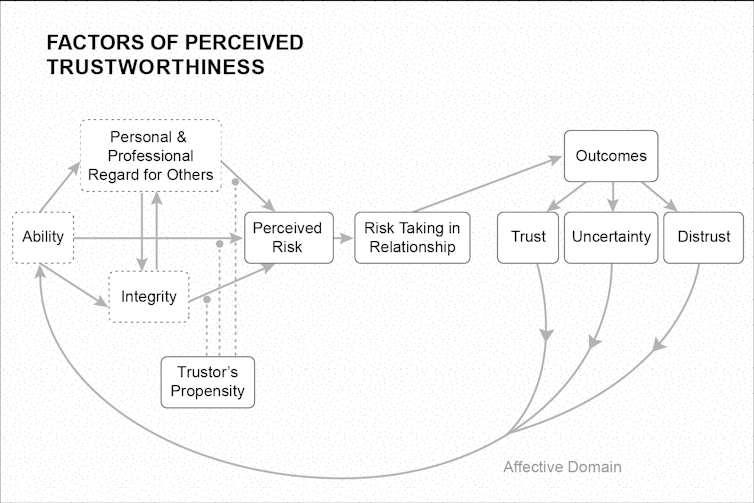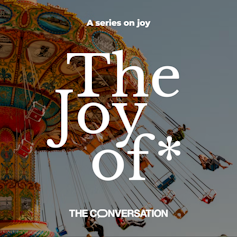“The real way to prevent bullying: Create inclusive homes and classrooms,” by Nikki Martyn, University of Guelph-Humber and Elena Merenda, University of Guelph-Humber
Close your eyes. Now imagine your three-year-old self, sitting on the classroom carpet, involved in a large group activity. You and the other children are required to listen and follow along. Some are able to sit quietly and actively participate, but not you.
You need to move. You want to jump in and not wait your turn. You make noises and impulsive movements. You are ridiculed for not participating and being disruptive. Some children ask questions about why you act the way you do. They ask why you’re different.
An early childhood educator can react in many ways. They can create an environment that condemns diversity. Or they can support diversity, thereby teaching children to care about others.
Bullying Among Children
Children often experience the world as if they are not important, not heard, understood or accepted for who they truly are. This is very painful for humans because we are born to connect, and it often leads to bullying among children.
Bullies are victims. They are victims of environments that make them feel vulnerable, unimportant, undervalued, unaccepted or unappreciated. A common reaction is to try to make others feel small and insignificant.
On Wednesday, Feb. 28, 2018, people across the world will be wearing pink in support of Pink Shirt Day — to raise awareness about bullying.
To effect change and reduce bullying every day, early childhood professionals and parents can also play a huge role — by creating safe spaces that reflect the children in the classroom and the home and by encouraging them to express how they feel on the inside.
Developing Empathy
There is a great amount of difference in our society today. This includes differences in ethnicity, religion, culture, gender, identity and disability, as well as personality and behavioural differences.
The difference does not have to be scary for children; rather, it should be discussed with them and they should be encouraged to embrace differences.
The development of empathy and theory of mind at an early age can help children understand differences — through sharing feelings with others and understanding others’ perspectives and experiences of the world.
The development of an inclusive environment both at school and at home can help children understand and accept differences.
In an early learning environment, it is easy to see how we are all different: We learn differently, we understand differently, and we socialize differently. In fact, it is much easier to see the differences at times than it is to see the similarities in our human condition.
Take yourself back to the carpet, where you cannot sit still and are disengaged. An inclusive environment and a responsive early childhood educator would allow you to sit on something like a hot water bottle or wiggle chair to allow your body to move to support your attention and engagement.
You may also be given a fidget toy to manipulate in your hand to help focus your attention. Imagine yourself wiggling and fidgeting. You’re engaged and focused.
Inclusion Without Bias
The challenge with a responsive and inclusive response from the early childhood educator is that the other children notice that you get to touch and sit on different things and they want them to.
It’s easy to feel it is unfair that some kids get toys and others don’t. What is interesting about creating an inclusive environment is that it is OK that we are all different and we all get different things to support our development and learning.
The important part is that early childhood educator are able to discuss differences openly and thoughtfully to reduce bias. It is important that educators are able to hear and understand each child’s perspective, to be able to say: “Joe needs to hold something in his hand to help him listen.”
The kids can see and experience the difference. They understand that if an accommodation is made for Joe when they require something, they will get what they need too.
Modelling inclusion is how we can combat discrimination and intolerance in society, and ultimately, bullying among children. It is the only way to effectively create change.
 Parents and educators can support children against bullying by teaching them to:
Parents and educators can support children against bullying by teaching them to:
1. Label feelings
When children can identify, and understand their own feelings they can understand how others feel. As children get older, parents and teachers can focus on the more difficult emotions including shame, guilt, embarrassment, anger, fear and sadness — in both themselves and others.
2. Understand the differences
Discuss the ways children are different (e.g., taller and shorter) and similar (e.g., we all feel sad at times) to one another. Try not to get anxious when a child mentions a disability or the colour of your skin. This is an obvious difference and our anxiety indicates that there is something wrong or to be scared of.
3. Help others
Let children try to help others. When another child is upset, discuss why, and how to help them feel better. Learning through doing is great when developing empathy and perspective-taking skills.
4. Perform acts of kindness
Allow the children to experience how it feels to make people feel good. Identify the individual child’s strengths and abilities and how they can use these to help others. Discuss how it makes them feel. Teach that generosity and kindness matter.
5. Repair relationships
We will always hurt people; this is part of life. When your child hurts someone else either intentionally or unintentionally, help them find a way to genuinely repair the relationship (e.g., with an apology or letter). Encourage the child to take responsibility for their actions.
6. Follow your lead
Model the behaviour you want to see in children. If a parent models bullying or aggressive behaviour, it will be very difficult for a child to engage in caring, empathic behaviour.
If you are working on changing your own behaviours, talk about it with your child. You can explain how it feels and the struggle to change your actions and understanding of the world. Your child can understand. And apologize for yourself when you misstep. We all do.![]()
Credits
Nikki Martyn, Program Head of Early Childhood Studies, University of Guelph-Humber and Elena Merenda, Assistant Program Head of Early Childhood Studies, University of Guelph-Humber
This article is republished from The Conversation under a Creative Commons license. Read the original article.



 Leaders Of The Future
Leaders Of The Future



 Teaching Perseverance
Teaching Perseverance






 Social Influence
Social Influence
 Tangibility
Tangibility